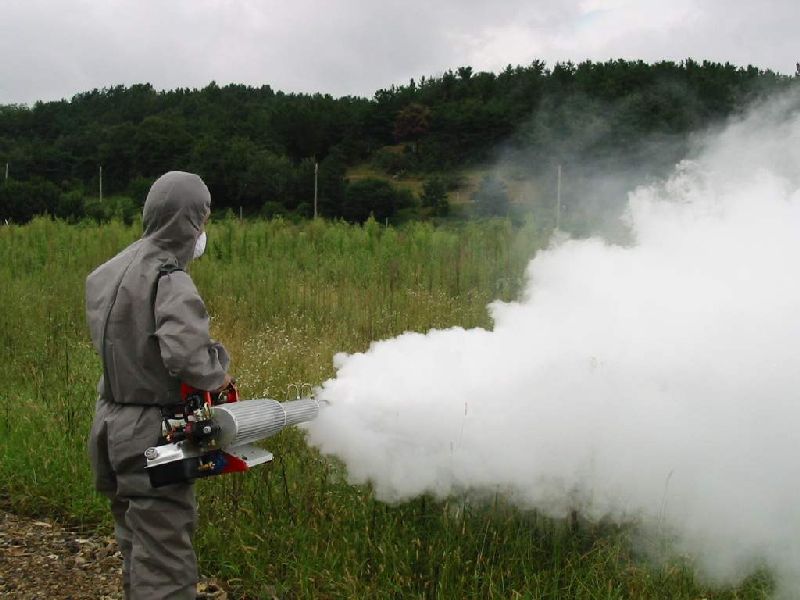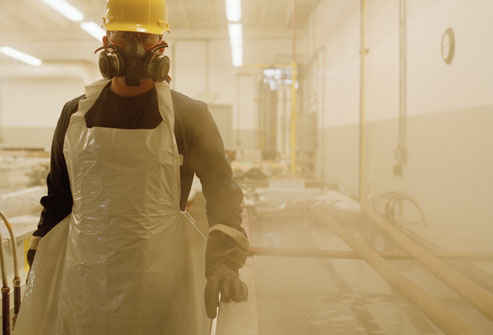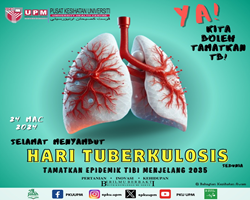Occupational Asthma
Asthma related to work is known as Occupational Asthma. This is due to narrowing of the respiratory tract due to allergies to Asthma agents found in the workplace. Based on the report of occupational disease statistics from the Social Security Organization (SOCSO), there were 13 cases of Asthma Occupational Disease reported in Malaysia in 2016. This accounted for nearly 3.0% of occupational diseases associated with the respiratory system.
Occupational asthma can be categorized into two:
- Work-induced asthma or Asthma initiated by agents in the workplace. It means someone who has no history of Asthma disease and no family history of Asthma, but develop Asthma disease when exposed to agents at workplace.
- Work-aggravated asthma or Asthma that worsened by agents in the workplace. This means someone who has been suffering from Asthma disease since childhood and has history of Asthma disease in family, and his Asthma disease get worse when exposed to agents at workplace.
Are symptoms of Occupational Asthma similar to other Asthma illnesses?
The symptoms of Occupational Asthma are similar to Asthma illnesses such as difficulty in breathing (Photo 1), cough, breathing sounds, chest tightness and so on.
These symptoms may occur after several days / months / years of exposure at work. However, for Occupational Asthma, this symptom is reduced if the patient is on vacation or move to another area where there is no causative agent. Hence, it is important that the patient consults Occupational Health Doctor to confirm the symptoms.
 Photo 1: Asthmatic symptom ie shortness of breath
Photo 1: Asthmatic symptom ie shortness of breath
Who are the workers at risk of getting Occupational Asthma?
Examples of high-risk workers with Occupational Asthma are those exposed to pests, fungi, pollen, chemical vapor, fumes and mist, vegetable dust, metal dust (Photo 2), wood dust (Photo 3), pesticides (Photo 4) and other activities similar to that.
 Photo 2: Welding & soldering
Photo 2: Welding & soldering
 Photo 3: Wood dust
Photo 3: Wood dust
 Photo 4: Pesticides
Photo 4: Pesticides
Prevention of Occupational Asthma Attacks
The best way to prevent Asthma attacks is to work in an environment where no Asthma agents are listed above. However, more practical control measures that can be taken as follows: -
- Follow healthy and safe work procedures.
- Make sure control measures at work are followed.
- Try to identify agents that may trigger Asthma attacks.
- Avoid exposure to agents that can trigger Asthma attacks.
- Use all-time personal protective equipment such as face mask or respirator to prevent from inhaling asthma agents.
- Stop smoking.
- Take asthma medicines as prescribed by doctor.
- Get medical advice early if you feel that you have Occupational Asthma disease
- Report to employer / Occupational Safety and Health Committee of your PTJ so that appropriate control measures can be taken to improve the work environment.
- Employers need to identify workers who are at risk and provide adequate and appropriate personal protective equipment to workers.
- Perform regular medical examinations such as Lung Function Test / Peak Flow Meter.
Treatment
In general, early stage of Occupational Asthma can be restored by controlling exposure to Asthma agents. However, for chronic Occupational Asthma, continuous treatment may be required despite the best efforts has been done from being exposed to Asthma causative agents.
Treatment of Occupational Asthma is similar to that of regular Asthma which is drugs and elimination of asthma agents at workplace. There are two main treatment for Occupational Asthma: -
1.Medicines
- To improve blockage of respiratory tract (medication for immediate relief) and long-term control (preventing asthma attacks from recurring) (Photo 5).
2.Keep away from exposure to agents at workplace that may trigger Asthma attacks by:
- Eliminate agent at work (if possible)
- Improve ventilation in workplace environment
- Use personal protective equipment (Figure 6)
- Work in a new place with no agent-causing Asthma

Photo 5: Use of inhaler medicines to control asthma
 Photo 6: Use of personal protective equipment in dusty environment
Photo 6: Use of personal protective equipment in dusty environment
References
Ministry of Health Malaysia. Asthma and Occupation. Retrieved September 28, 2018, from http://www.infosihat.gov.my/index.php/multimedia/risalah/item/Asma-dan-pekerjaan
Social Security Organization (2018). Annual Report 2016. Retrieved September 28, 2018, from https://www.perkeso.gov.my/images/laporan_tahunan/LaporanTahunan2016.pdf
Prepared by;
Dr Arma Noor
Occupational Health Services
October 2018
Date of Input: 30/10/2018 | Updated: 05/08/2019 | izzatussofia
MEDIA SHARING











 Photo 1: Asthmatic symptom ie shortness of breath
Photo 1: Asthmatic symptom ie shortness of breath Photo 2: Welding & soldering
Photo 2: Welding & soldering  Photo 3: Wood dust
Photo 3: Wood dust Photo 4: Pesticides
Photo 4: Pesticides
 Photo 6: Use of personal protective equipment in dusty environment
Photo 6: Use of personal protective equipment in dusty environment
















